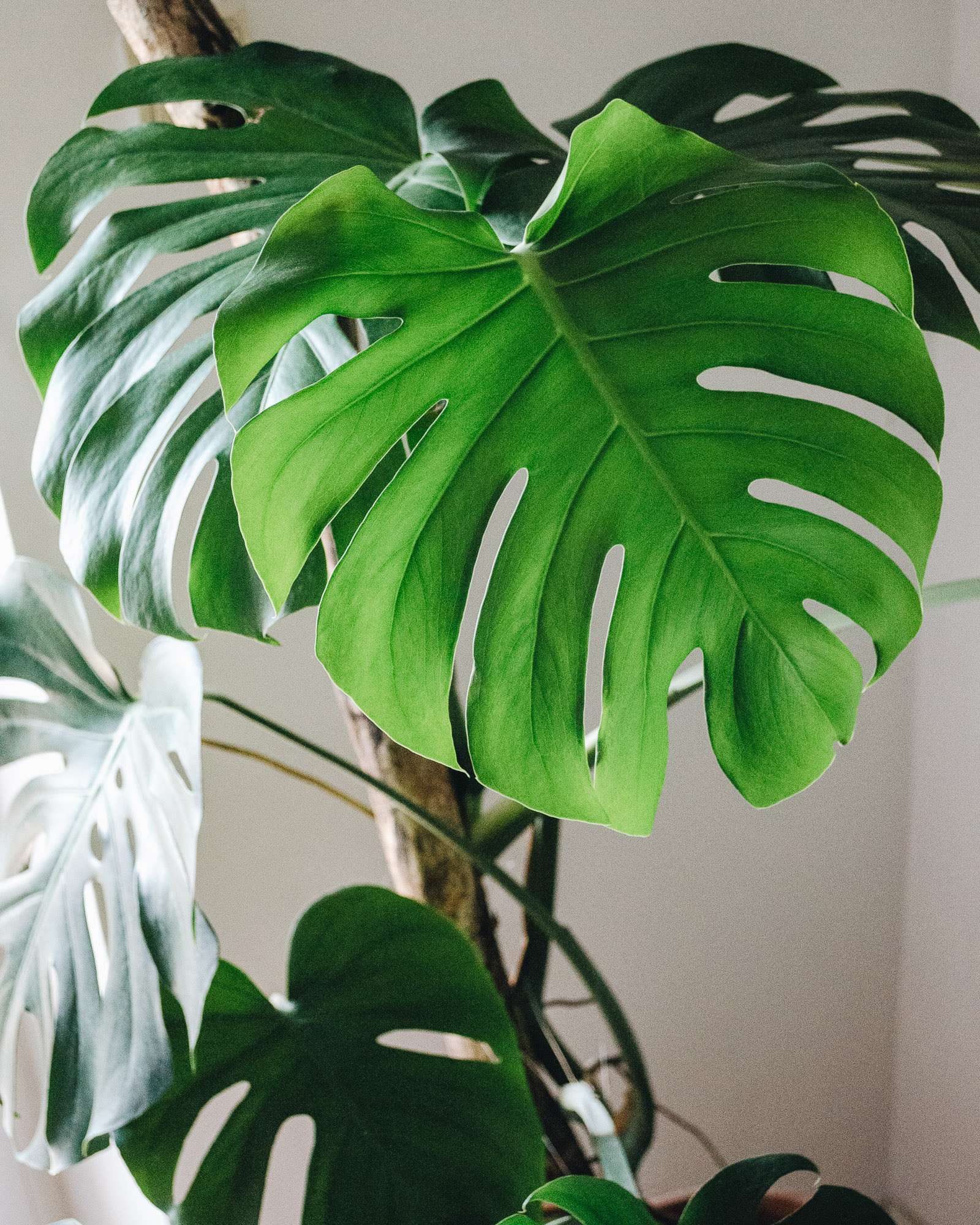Monstera deliciosa
Botanical name: Monstera deliciosa
Named by: Frederik Michael Liebmann (1849)
Family: Araceae
Genus: Monstera
Native Area: Costa Rica, Guatemala, Honduras, Southeast and Southwest Mexico, Mexico Gulf, Nicaragua, Panamá
Trade Names: Monstera, Monstera deliciosa
Common Names: Swiss cheese plant, Cheese plant, Mexican breadfruit, Fruit salad plant, Split-leaf Philodendron

Monstera deliciosa
Photo by Houseplants.xyz / Negabiljaka.com
Care difficulty: Easy
Light preference: Bright light
Minimal Temperature: 10° C or 50° F
Optimal Temperature: 22° C or 72° F
Humidity: Medium
Watering: Water when soil is dry
Feeding: 20-20-20 biweekly during growth period
Soil: Equal mix of coconut peat, orchid bark and perlite; lecca
Soil PH: 5.5-6
Repotting: Every 1-2 years

Monstera deliciosa
Photo by Houseplants.xyz / Negabiljaka.com
Speed of growth: Moderate
Mature size: Up to 8 meters (26 feet) x 2.5 meters (8 feet)
Flower: White, similar to those of Spathiphyllum, rarely flowers indoors
Propagation: Stem cutting with a node, offshoots
Pests: Mealybugs, Spidermites, Scale, Thrips
Diseases: Phytophthora root rot
Toxicity: Toxic

Monstera deliciosa
Photo by Houseplants.xyz / Negabiljaka.com
- Guttation (xylem sap droplets on leafs) is a sign that there's too much moisture around the roots
- Produces edible fruit, but rarely flowers indoors
- Can be easily propagated from stem cuttings in water, sphagnum moss, lecca or soil
- Aerial roots can be trimmed
- Wipe the leaves with a damp cloth and don't use any leaf shine